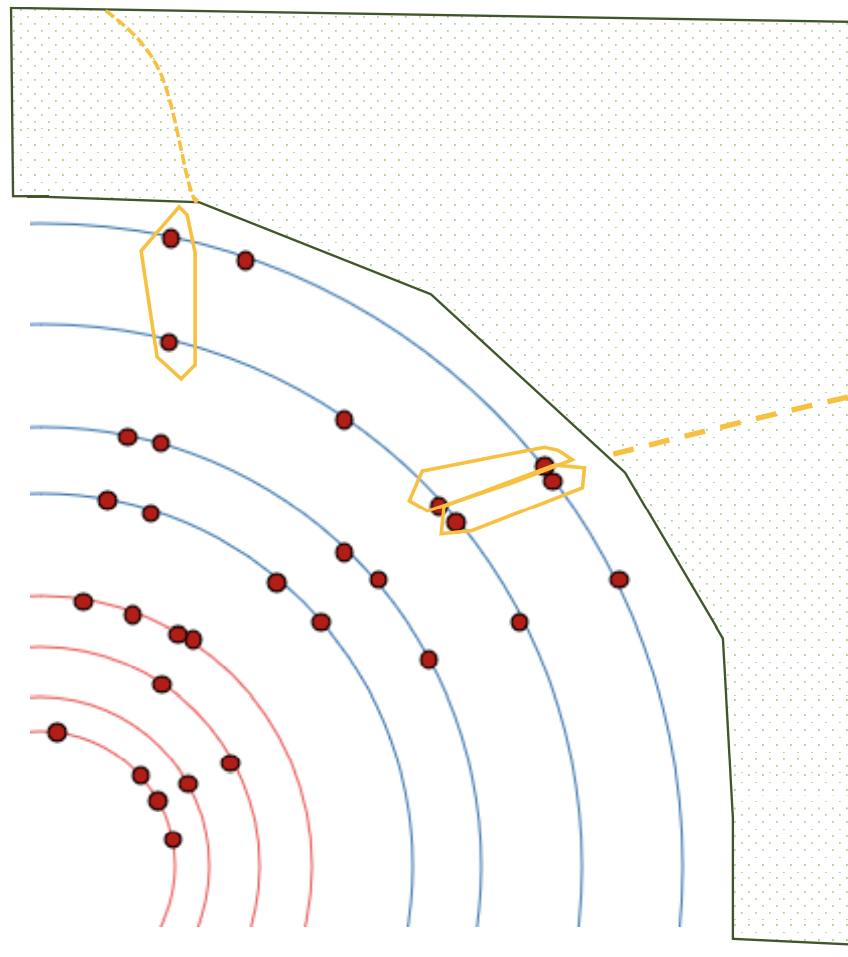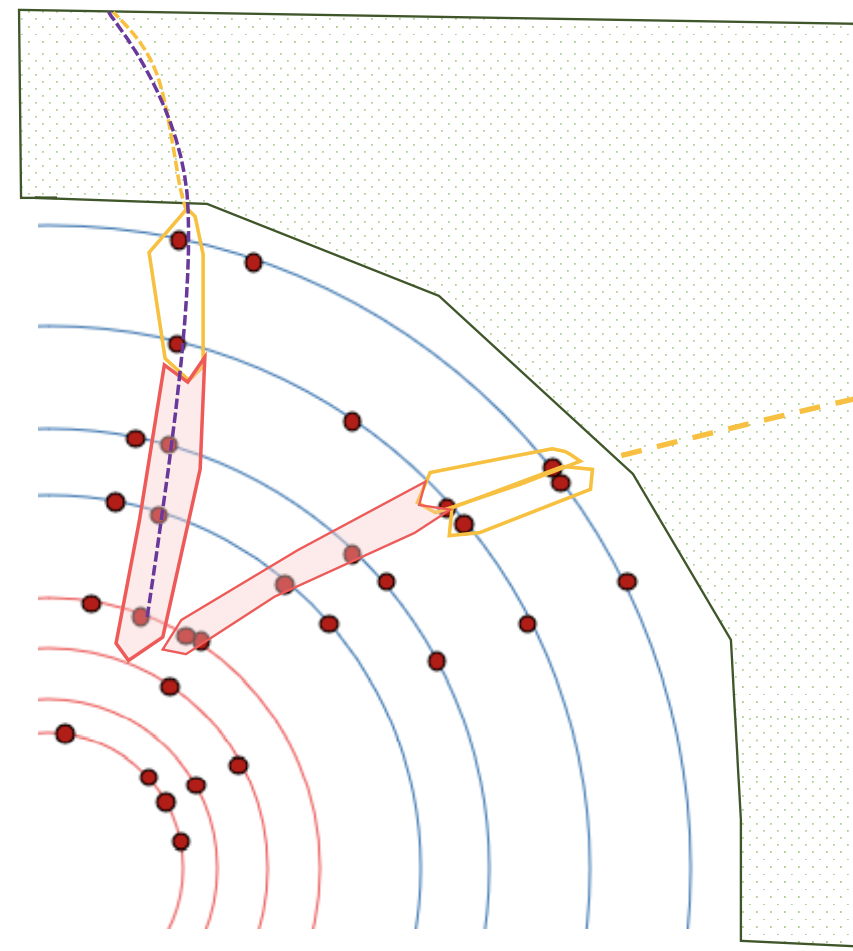The primary reconstruction pass detailed in previous sections is optimized to reconstruct particles produced in the primary pp interactions. To increase acceptance to particles produced at a greater distance from the beamline, such as electrons originating from photon conversions in the detector material, a secondary back-tracking pass is performed using the detector hits not already assigned to tracks from the primary pass. Here, track reconstruction is only attempted in ROI determined by deposits in the EM calorimeter. Unlike the first pass, this second pass starts with segments of hits in the TRT compatible with the ROI.
In the presence of such a segment, short silicon track seeds consisting of two SP are constructed in the Pixel and SCT subdetectors. These only include hits close-by to the TRT, and two SP rather than three as in the primary pass allows for shorter secondary tracks.
These seeds are then extended into track candidates using the same procedure as for the primary pass – e.g, a road search,Kalman filter,ambiguity processor, and global $\chi^{2}$ fitter. The track candidates are then again extended (back) into the TRT using the collected hit segments.
TRT segments that are not used by the outside-in pass are fit as TRT-Standalone tracks. These are typically low quality tracks with high fake rates (very short tracks that only rely on 1D measurements). Performance for these also decreases with increasing pile-up – but they still have some utility for some certain applications.
In the following sections we see vertexing and “special” tracking passes – including Large Radius Tracking.


